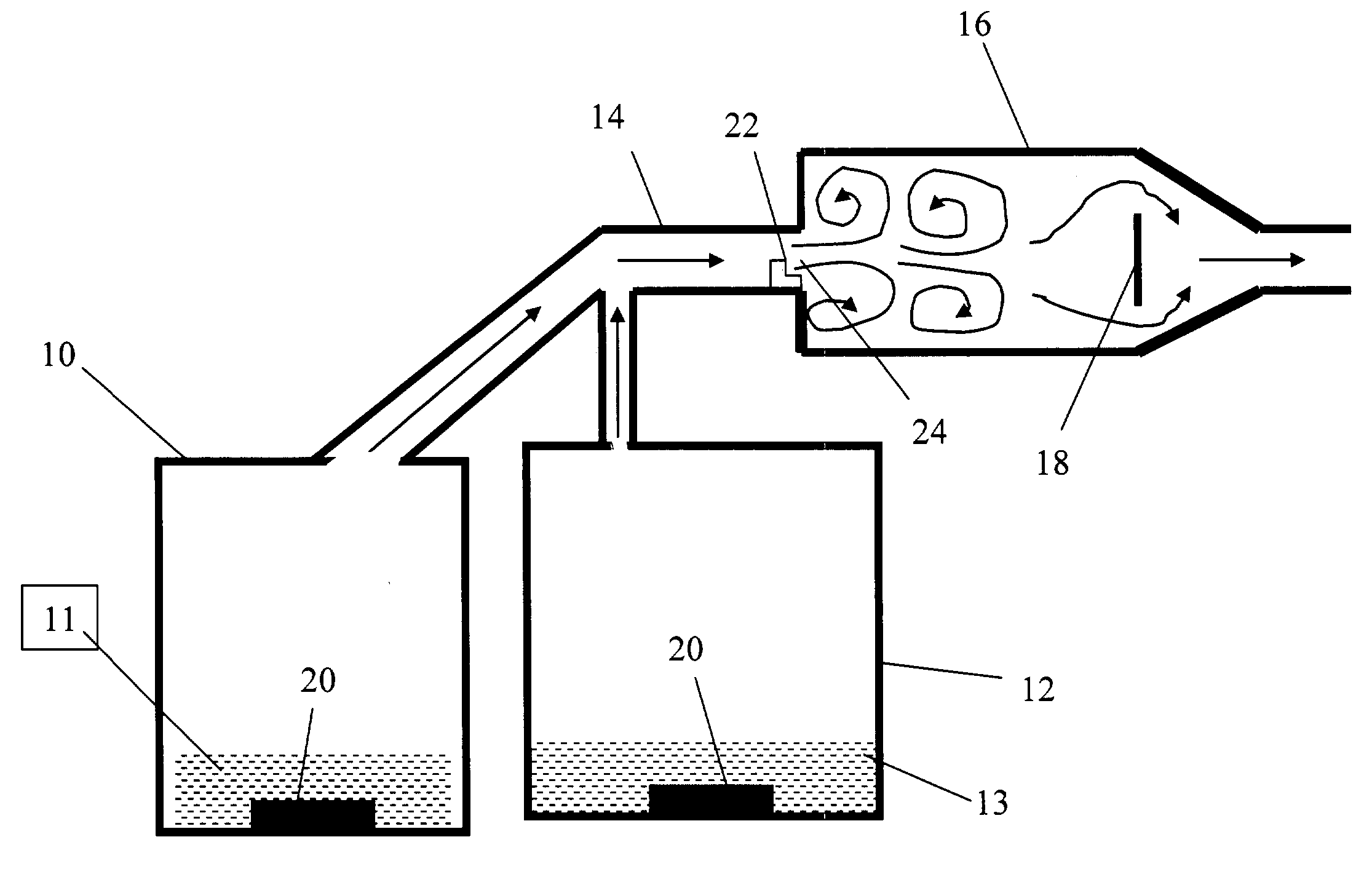Method for bioeradication using fine mist of biocide solutions
a biocide solution and fine mist technology, applied in the field of methods, can solve the problems of poor decontamination efficiency, undetermined stability, toxicity and effectiveness of chlorine dioxide gas for such applications, and poor decontamination efficiency, so as to increase the reactivity and effectiveness of the mist as a biocide agent, increase the total reactive surface area of the mist, and increase the effect of reactivity
- Summary
- Abstract
- Description
- Claims
- Application Information
AI Technical Summary
Benefits of technology
Problems solved by technology
Method used
Image
Examples
Embodiment Construction
[0023] Referring now to the figures, a method and device for bioeradication using fine mist of gaseous biocide solutions is shown in various embodiments, which overcome the problem of gas separation of gaseous biocide from a solution with a solvent such as water. Chlorine dioxide is the primary biocide agent considered and has been found very effective for sterilizing, disinfecting, and sanitizing, but exhibits the known problem of instability caused by gas separation prior to reaching the treatment site. Chlorine dioxide may be used in lieu of biocide or biocide agent throughout the detailed description. Likewise, water or water mist will be used interchangeably with the term solvent.
[0024] A method of creating a fine mist of stable chlorine dioxide or biocide solution is disclosed for sterilizing, disinfecting, or sanitizing. The chemical biocide used in the desired sterilizing solution is not restricted to chlorine dioxide but may include other biocide gases and their mixtures or...
PUM
| Property | Measurement | Unit |
|---|---|---|
| diameter | aaaaa | aaaaa |
| diameter | aaaaa | aaaaa |
| diameter | aaaaa | aaaaa |
Abstract
Description
Claims
Application Information
 Login to view more
Login to view more - R&D Engineer
- R&D Manager
- IP Professional
- Industry Leading Data Capabilities
- Powerful AI technology
- Patent DNA Extraction
Browse by: Latest US Patents, China's latest patents, Technical Efficacy Thesaurus, Application Domain, Technology Topic.
© 2024 PatSnap. All rights reserved.Legal|Privacy policy|Modern Slavery Act Transparency Statement|Sitemap



